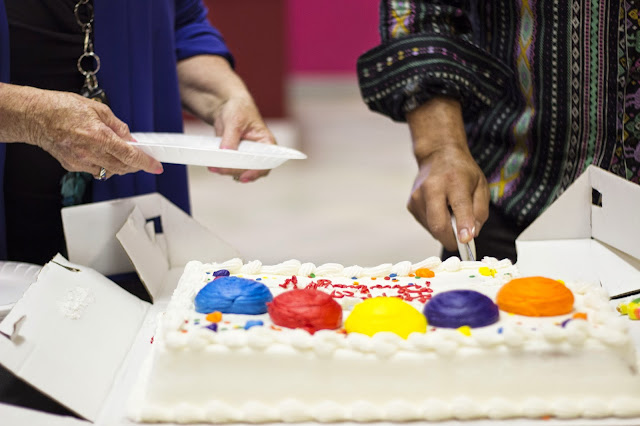Well, that was a blast. This past week I had the pleasure of attending National Performance Network/Visual Artist Network's Annual Meeting in Austin, Texas - an amazing conference for folks working at the intersection of the arts and justice. The theme of this year's conference was displacement and gentrification, which was exemplified all around us in the city of Austin. We brainstormed, planned, acted, and performed around issues of displacement. Not only was this one of the best actively anti-oppression gatherings I have been a part of, it was a massively talented, raucous, informed exploration of craft. And they really know how to throw a party.
 |
| Getting down with some Austin grub with my new heroines from Forklift Danceworks. |
I had the honor of being included on a panel entitled, "Equitable Creative Placemaking", along with Jess Solomon of Art in Praxis, Taylor Payer of All My Relations / Native American Community Development Institute and moderated by Javier Torres of ArtPlace America. We each shared about our work and discussed how we engage with community through place-based arts practices.
Javier shared with us ArtPlace America's wonderful definition of Creative Placemaking:
Many thanks to all who danced, organized, and connected at the Austin Annual Meeting.
 |
| A slide from Jess Solomon's work through Art in Praxis. |
Javier shared with us ArtPlace America's wonderful definition of Creative Placemaking:
"Successful creative placemaking projects do four things:
- Define a community based in geography, such as a block, a neighborhood, a city, or a region
- Articulate a change the group of people living and working in that community would like to see
- Propose an arts-based intervention to help achieve that change
- Develop a way to know whether the change occurred"
Lots more incredible resources on this work here. I look forward to applying these steps further in my home community at Quail Springs Permaculture as our creative placemaking work deepens.
Many thanks to all who danced, organized, and connected at the Austin Annual Meeting.































